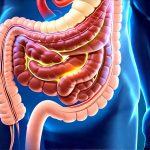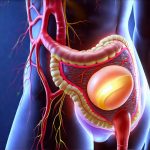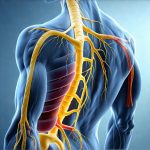The pervasive pursuit of digestive regularity often leads individuals down paths with unintended consequences, particularly concerning laxative use. While initially intended as a temporary solution for constipation, long-term reliance on these agents can fundamentally alter the intricate ecosystem and neurological pathways within the gut, leading to visceral hypersensitivity and chronic discomfort. This isn’t merely about dependence; it’s about a reshaping of how the digestive system functions and perceives stimuli, ultimately creating a cycle where the very act of attempting relief exacerbates the problem. The underlying mechanisms are complex, involving changes in gut motility, microbiome composition, and neuronal signaling, all contributing to heightened sensitivity and increased susceptibility to symptoms like nausea and bloating after eating.
Understanding this phenomenon requires moving beyond simplistic notions of “cleansing” or “detoxing.” Chronic laxative use isn’t about eliminating toxins; it’s about disrupting the natural physiological processes designed for efficient digestion and waste removal. This disruption can lead to a diminished capacity for the gut to function independently, creating a reliance on external assistance that paradoxically weakens its inherent ability to regulate itself. The result is often a vicious cycle of increasing laxative dosage to achieve diminishing returns, accompanied by escalating gastrointestinal distress and psychological dependence. Furthermore, the impact extends beyond the physical realm; the anxiety surrounding bowel movements can significantly affect mental wellbeing and quality of life. It’s important to remember that our gut health can be a root cause of issues like hormonal acne https://vitagastro.com/how-gut-health-can-be-a-root-cause-of-hormonal-acne-and-oily-skin/ and overall wellbeing.
Altered Gut Motility & Visceral Hypersensitivity
Laxatives, even those marketed as gentle options, exert a significant influence on gut motility – the wave-like muscular contractions that propel food through the digestive tract. Prolonged use can disrupt this natural rhythm, leading to what’s known as motility dysfunction. Stimulant laxatives, in particular, aggressively stimulate intestinal muscles, potentially desensitizing them over time and requiring progressively higher doses for the same effect. However, even bulk-forming or osmotic laxatives, while gentler, consistently alter the rate at which food moves through the gut. This unnatural pacing disrupts the delicate balance of digestion and absorption, ultimately contributing to visceral hypersensitivity – an amplified perception of pain and discomfort in the digestive system.
This hypersensitivity isn’t simply about feeling more pain; it’s a fundamental shift in how the nervous system interprets signals from the gut. The enteric nervous system (ENS), often referred to as the “second brain,” is intricately interwoven within the digestive tract and plays a critical role in regulating its functions. Chronic laxative use can influence the ENS, leading to altered neuronal signaling pathways and a lowered threshold for pain perception. As a result, even normal digestive processes – like gas production or food transit – can be interpreted as painful or uncomfortable, triggering symptoms like bloating, cramping, and nausea. The effects of late-night eating https://vitagastro.com/the-effects-of-late-night-eating-on-gut-motility-and-bacterial-activity/ can also contribute to these issues.
The relationship between motility dysfunction and hypersensitivity is bidirectional. Altered motility contributes to increased distension within the gut, which then stimulates pain receptors and further exacerbates visceral hypersensitivity. This creates a feedback loop where discomfort leads to more laxative use, perpetuating the cycle of disruption and increased sensitivity. The consequence is often a heightened awareness of normal bodily functions, leading to anxiety about digestion and an aversion to eating.
The Role of the Gut Microbiome
The gut microbiome – the vast community of microorganisms residing in our digestive tract – plays a pivotal role in maintaining gastrointestinal health. Long-term laxative use significantly disrupts this delicate ecosystem. Laxatives can alter the composition of the microbiome by reducing microbial diversity and favoring certain bacterial species over others. This disruption is particularly pronounced with stimulant laxatives, which can drastically reduce gut transit time, limiting the opportunity for beneficial bacteria to thrive.
A less diverse microbiome is associated with increased intestinal permeability – often referred to as “leaky gut”– allowing undigested food particles and toxins to enter the bloodstream, triggering immune responses and inflammation. This chronic low-grade inflammation further contributes to visceral hypersensitivity and exacerbates gastrointestinal symptoms. Moreover, changes in the microbiome can affect the production of neurotransmitters and signaling molecules that influence brain function, potentially contributing to mood disorders and anxiety. Modern diets https://vitagastro.com/how-modern-diets-deprive-your-gut-of-prebiotics-and-protective-bacteria/ often leave our gut lacking the necessary prebiotics.
Restoring a healthy gut microbiome is crucial for mitigating these effects. Strategies like incorporating prebiotic fibers https://vitagastro.com/prebiotic-fibers-youre-not-eating-enough-of-and-how-they-impact-gut-health/ into the diet, reducing stress levels, and avoiding unnecessary antibiotic use can help rebalance the microbial ecosystem and improve overall digestive health. However, simply introducing probiotics isn’t always enough; addressing the underlying cause of disruption – in this case, chronic laxative use – is essential for long-term success. Stress also alters https://vitagastro.com/how-long-term-stress-alters-gut-microbiome-composition-and-immune-response/ gut microbiome composition.
Nausea & Postprandial Distress
The combination of altered gut motility, visceral hypersensitivity, and microbiome imbalance often manifests as nausea and postprandial distress – discomfort experienced after eating. The prolonged exposure to heightened sensitivity can lead to a conditioned aversion response, where the mere sight or smell of food triggers feelings of nausea and anxiety. This is further compounded by the fact that laxative use can disrupt normal digestive signaling pathways, leading to delayed gastric emptying (the rate at which food leaves the stomach) and increased intestinal distension.
When the gut is overly sensitive, even small amounts of food can trigger a cascade of discomforting symptoms. The ENS becomes hyperreactive to stimuli, sending exaggerated signals to the brain that are interpreted as nausea, bloating, or abdominal pain. This can lead to a fear of eating, resulting in reduced food intake and potential nutritional deficiencies. In severe cases, it can even contribute to the development of disordered eating patterns. Recovering gut balance https://vitagastro.com/how-to-recover-gut-balance-after-intermittent-fasting-and-electrolyte-depletion/ is key to addressing these issues.
Addressing postprandial distress requires a multifaceted approach. Dietary modifications – such as opting for smaller, more frequent meals, avoiding trigger foods, and ensuring adequate hydration – can help minimize digestive discomfort. Mindful eating practices, focusing on slowing down and savoring food, can also reduce anxiety surrounding mealtimes. Furthermore, psychological interventions like cognitive behavioral therapy (CBT) can help individuals challenge negative thought patterns and develop coping mechanisms for managing nausea and anxiety.
Ultimately, breaking the cycle of chronic laxative use is paramount to restoring gut health and alleviating postprandial distress. This often requires a gradual weaning process under medical supervision, combined with lifestyle modifications aimed at improving digestive function and reducing stress levels. It’s about retraining the gut to regain its natural rhythm and rebuilding trust in the body’s ability to digest food comfortably.


















